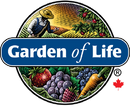#3: Use Recognized Third Parties to Inspect Everything
A few of the third-party inspections we look for in creating clean products include:
Certified USDA Organic: There’s only one way to know if a product is truly organic: verification by an independent third party to meet the USDA’s rigorous requirements for organic. Look for the USDA Certified Organic seal on the front of the package. No seal? Then it’s not really USDA Organic—no matter what they say.
We’ve found that the only way to ensure that Garden of Life is—and remains—clean is organic. Organic costs more. That’s why most companies don’t do it, but Garden of Life does, and we write long-term contracts with our family farmers so they can sell their crops at a fair price to cover the increased costs of growing organic. We don’t pass those increased costs along to our customers, so we take lower margins.
Then we compete with conventional products calling themselves “clean” and telling customers that they’re better because they support local farmers who can’t afford to grow organic crops. The truth is that any honest conversation around clean begins with organic.
Non-GMO Project Verified: Today there’s only one way to ensure that our raw materials are not sourced from genetically modified (GM) sources—independent, third-party verification by the Non-GMO Project, North America’s only third-party verification for Non-GMO.
Every raw material sent to us for evaluation carries a statement from the supplier that it’s not GM or from GM sources. But, as we’ve said, each raw material has multiple subcomponents. So, saying that one material isn’t GM when it’s manufactured isn’t the same as saying the entire ingredient is not GM-sourced. We need full traceability through the entire ingredient and sub-ingredient supply chain to ensure that raw materials don’t contain GMOs.




